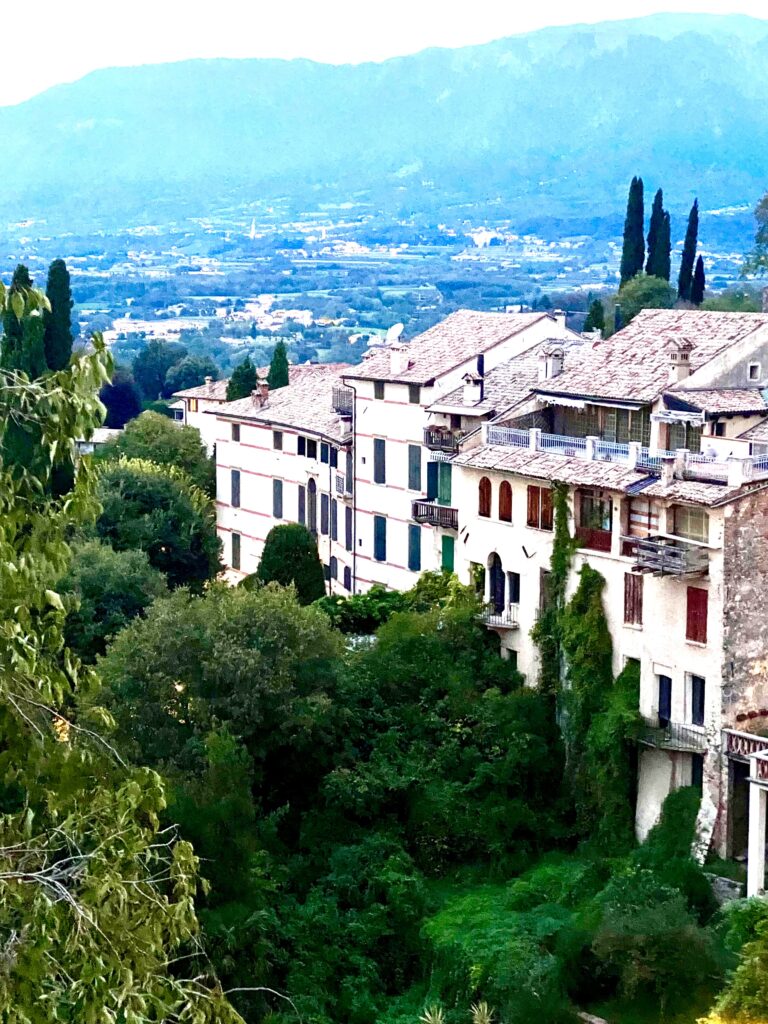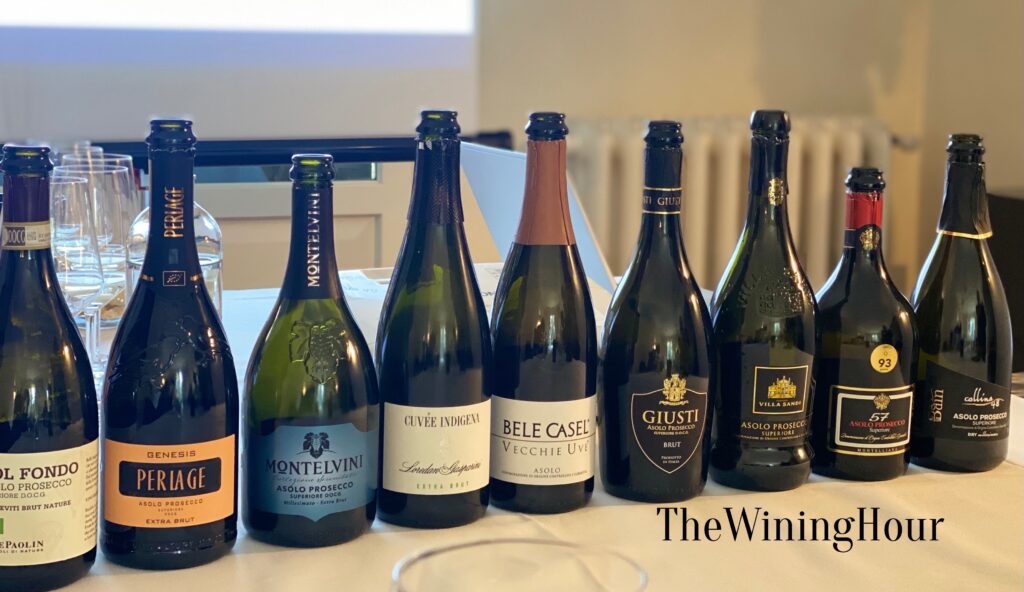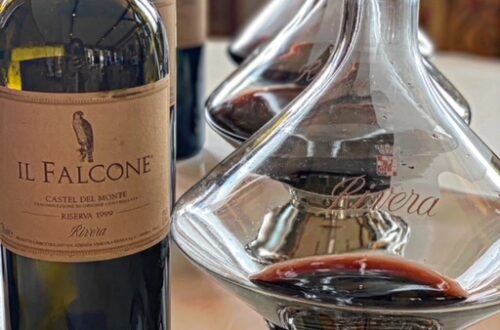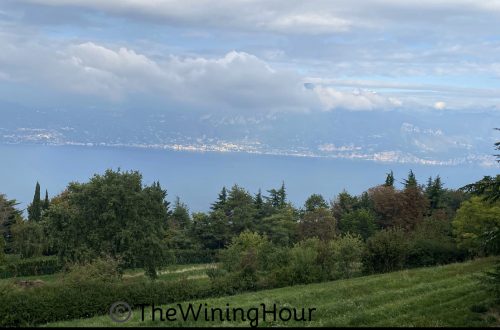
#Asolo Prosecco: Taste the Difference
Asolo is a small town located in the Veneto region of Italy, about 50 kilometers northwest of Venice. Said to be the “Pearl of the Province of Treviso” and the “City of a Hundred Horizons” due to its stunning, panoramic views of the Venetian plain, the Dolomites, and the Alps. In fact, Asolo is known to be one of the most pristine and attractive towns in all of Italy, and recognized for its beautiful medieval architecture, stunning views of the surrounding hills and valleys, and rich cultural heritage. There is no wonder why Asolo became a UNESCO World Heritage Site in 2020.



The town’s historical center is dominated by the 12th-century castle and the Rocca, a fortified structure built in the 14th century. Asolo is also famous for its artistic and literary connections. Many famous writers, artists, and intellectuals have called Asolo home over the years, including Robert Browning, Eleonora Duse, and Freya Stark. But wait…there’s more!



Asolo not only refers to the region, but it also refers to a type of wine: Asolo Prosecco. Asolo Prosecco is an elegant sparkling wine produced in the hills surrounding the town of Asolo. Here, the Glera grape dominates and does very well with the terroir. The production zone is in the Province of Treviso, at the foot of Monte Grappa; it lies in the high hills to west of the River Piave, in the shelter of the Dolomites and the Montello uplands. The cultivation area covers 18 communes around Asolo. This area is very conducive for wine production due to the trifecta of the northern latitude, the contours of the hills and mountains and the proximity to the Adriatic Sea. These factors also lead to Asolo’s moderate climate. The climate also contributes to the rich biodiversity manifested in the region. Asolo abounds with lush greenery. In fact, while visiting the region, I recall seeing all types of vegetation growing all around. In fact, one could even make a delicious salad with the various wild greens and fragrant herbs everywhere!

As noted, Glera is the flagship grape. To be labeled as Asolo Prosecco DOC/G, the regulations call for at least 85% Glera grapes, with the remaining 15% consisting of other indigenous white grape varieties (such as Bianchetta, Trevigiana, Verdiso Perera and Glera Lunga). Most producers use 100% Glera, making it monovarietal. The higher quality Asolo Prosecco Superiore DOCG (granted in 2009) adheres to even stricter production requirements and was the first to include the Extra Brut category.
The DOC/G regulations also stipulate that the grapes must be harvested manually and that the yield per hectare be limited, facilitating a harvest of only the best grapes. When one considers hand harvesting, respect must be given to the Asolo zone of production, which truly involves heroic viticulture. The terrain of the Colli Asolani is extremely mountainous and steep, and the compact soil structures make it all the more challenging.
Moreover, Asolo Prosecco must be produced using the Charmat method, which involves fermentation in stainless steel tanks rather than in the bottle. This results in a fresher and fruitier taste compared to traditional Champagne-style sparkling wines. Asolo Prosecco is known for its elegant bubbles, light and delicate flavor and aroma, with notes of green apple, pear, and white flowers. Its low residual sugar yields a fresh and crisp bottle of sparkling wine, perfect as an aperitivo or paired with regional cuisine.

My most recent experience with Asolo was at the Slow Wine Tour in NY. However, my initial experience was a while back in the Asolo region itself. I had the pleasure of exploring Asolo with Consorzio Asolo Prosecco and its President, Ugo Zamperoni, as well as Studio Cru. At that time, my exploration of Asolo included a guided tasting by Kerin O’Keefe, acclaimed wine writer, journalist, and author.
The Wining Hour: Mastering Asolo Prosecco with Kerin O’Keefe
The bottles reflect the four different styles of Prosecco, in order from driest to sweetest (Dry, Extra Dry, Brut and Extra Brut). It was interesting to learn that “Extra Brut” actually originated in Asolo and this category, as the backbone, accounts for approximately 77% of sales.
Note: Each of these producers are all supporters of sustainability and heroic viticulture. The Consorzio Asolo Prosecco and the producers endeavor to practice sustainable and responsible viticulture, and they execute this by only using instruments and equipment that allow them to operate in a sustainable manner. As the La Rocca fortress is a major town landmark, the fortress and the hills are incorporated in the logo of Asolo Prosecco and that of the Consorzio (as seen on the bottles). Here’s what we tasted:


- Case Paolin 2021 Asolo Prosecco Sui Lieviti Brut Nature Col Fondo-a lovely Prosecco made Col Fondo style, in which the second fermentation occurs in the bottle. The wine is not disgorged, includes the sediment and has 0% residual sugar. Therefore, this wine is bone dry with bright citrus flavors. Brioche notes are evidence of yeast and being bottle on its lees. Mousse-like mouthfeel, with a saline finish. Although this type of wine requires a lot of skill, this prosecco demonstrates great finesse. Certified Organic.
- Perlage NV Asolo Prosecco Extra Brut Genesis is also Certified Organic. This one is coming from grapes grown in clay calcareous soil. It is dry, with notes of honey, apple and pear. Clean and with a butter almond finish. Mineral notes and less than 4 grams of sugar.
- Montelvini 2021 Asolo Prosecco Extra Brut This prosecco, produced with 100% Glera, is creamy with delicious green apple and pear. A solid prosecco with 5 grams of residual sugar and 11.5% ABV.

- Loredan Gasparini 2020 Asolo Prosecco Extra Brut Cuvée Indigena is produced from vines planted in 1975. This is a cuvée, indicating top quality, as it uses the most desired part of the grape juice. Delicious, with stone fruit, apple, pear. Savory, with great structure and vibrant acidity. The wine underwent spontaneous fermentation with native yeasts. At 0.1% residual sugar, this wine is bone dry. This prosecco is absolutely delicious! I couldn’t pour enough!
- Bele Casel 2018 Asolo Prosecco Extra Brut Vecchie Uve or “old grapes” comes from a certified organic vineyard. The wine is named for the oldest and rarest grapes in the Monfumo vineyards. Even the vineyard is nearly 100 years-old. Of course, Glera is the predominant grape here, but the producers also used old varieties such as Rabbiosa, Marzemina Bianca, Perera and Bianchetta Trevigiana. Vecchie Uve is fermented with no filtration or added sulfites and aged in tank for 15 months before the second (spontaneous) fermentation (Martinotti method), and aged on its lees for 15 months before bottling. The method used in the production of this prosecco allows for the depth of flavors and complexity. Aromas of white flowers and honey, and a palate of white citrus fruit. This wine demonstrates great longevity. The 2018 is from their latest vintage, as this wine is released every 4 years.
- Giusti Wine NV Asolo Prosecco Brut 100% Glera from three vineyard estates in Montello. Here, there are red, clay soils, rich in iron. Notes of green apple,white pear, spring flowers and crisp minerality. This wine is young and fresh with 7 grams of residual sugar.
- Villa Sandi NV Asolo Prosecco Brut Intense fruit aromas, white peach. This wine is very well structured. It is rounder and creamier than several of the others on the list. 12 grams of residual sugar. Elegant with a clean finish. 11% ABV
- Montelliana NV Asolo Prosecco Extra Dry 57 This is a classic toasting wine. Very aromatic. Fruity. It would be an easy choice for an aperitivo as well. 16 grams of residual sugar and 11% ABV.
- Bedin 2021 Asolo Prosecco Dry Colline 48 The sweetness of this wine is offset by the bright acidity. White peach, green melon. Creamy perlage. Elegant.
These nine bottles of Asolo Prosecco serve as an excellent way to learn about the region. Each style of Asolo Prosecco manifests very fine perlage and distinctive salinity. These bottles provided a great representation of their terroir and the versatility of this grape. Get to know the different story of Asolo Prosecco! Check back with The Wining Hour for more about Asolo, the producers and their awesome Prosecco.


Read more about Slow Wine: A Journey Through Artisanal Craftmanship
Also check out: A ‘Slow’ Wining Hour with Asolo Prosecco






